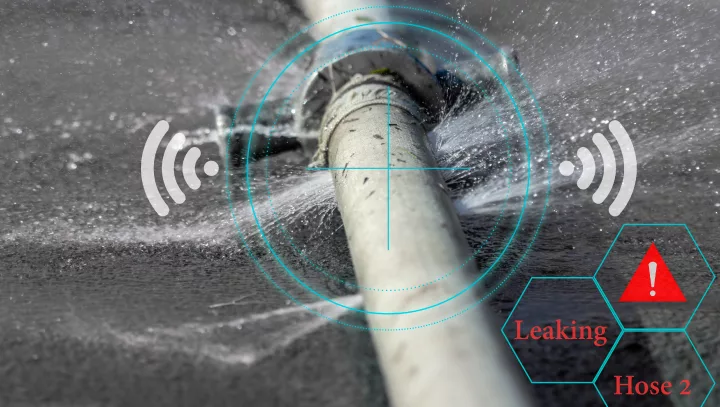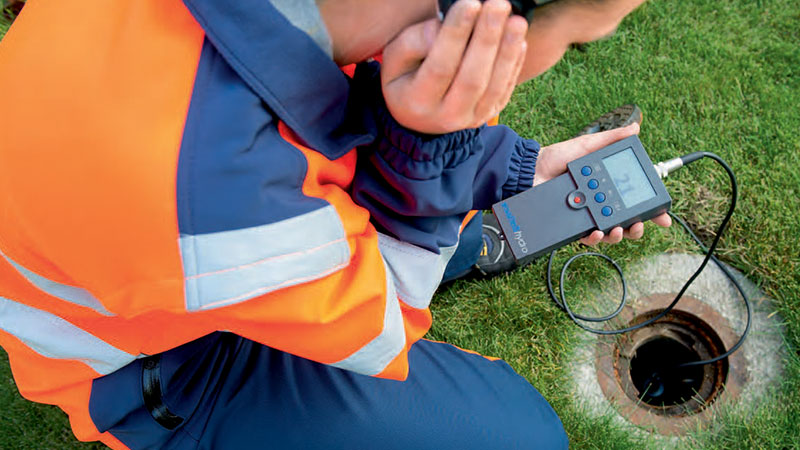Ingenious Solutions for Very Early Detection of Water Leaks in Buildings and Facilities
From advanced leak discovery technologies to the deployment of IoT sensing units for real-time tracking, the landscape of leak avoidance is progressing swiftly. Automated water circulation evaluation systems are reshaping just how leakages are recognized and attended to, leading the means for an aggressive technique to water leakage detection.
Advanced Leak Discovery Technologies
Advanced leak detection modern technologies, geared up with sophisticated sensing units and formulas, play a crucial role in quickly identifying and pinpointing water leakages in different settings. These modern technologies use a combination of acoustic, thermal, and electro-magnetic picking up methods to identify leakages properly. Acoustic sensors discover the audio of running away water, permitting for exact localization of the leakage resource. Thermal imaging discovers temperature adjustments triggered by water leak, supplying another efficient method for leak recognition. Electro-magnetic sensing units can identify adjustments in electro-magnetic fields caused by water, providing yet an additional layer of leakage detection ability.

IoT Sensors for Real-Time Monitoring
In the world of contemporary water leak discovery, the integration of IoT sensors for real-time monitoring represents a pivotal advancement in enhancing proactive leak detection capacities. These sensing units provide constant surveillance of water supply, giving real-time data on water flow rates, pressure variations, and temperature level adjustments. By leveraging IoT technology, these sensing units can identify also the tiniest abnormalities in water usage patterns, making it possible for early identification of potential leaks before they intensify right into major issues.
IoT sensing units transfer data to a centralized system, where sophisticated algorithms evaluate the information and create notifies or notices when irregularities are spotted. This real-time surveillance capability enables property owners or center supervisors to without delay resolve leaks, minimizing water damage, reducing repair service costs, and saving water sources.
Furthermore, IoT sensors can be incorporated with structure management systems, enabling for computerized reactions to detected leakages, such as shutting down water shutoffs or triggering pumps to mitigate the effect of leakages. On the whole, the execution of IoT sensors for real-time monitoring substantially improves the effectiveness and effectiveness of water leakage discovery in buildings and framework.
Artificial Intelligence Algorithms for Leakage Prediction

One key advantage of using equipment understanding for leakage forecast is its capacity to continuously find out and improve its precision in time. As more data is accumulated and fed into the algorithm, it can fine-tune its predictions and adjust to transforming problems, eventually raising the dependability of leakage detection systems.
In addition, machine understanding algorithms can assist in recognizing subtle indicators of leakages that may go undetected by traditional tracking techniques. water leak detection. By examining complicated information embed in real-time, these algorithms can supply very early warnings and notifies, enabling punctual treatment and precautionary upkeep to mitigate prospective water damages and connected expenses
Using Thermal Imaging for Leakage Discovery
Thermal imaging technology provides an appealing technique for finding water leaks in numerous systems and facilities. By utilizing infrared radiation and temperature variances, thermal imaging cameras can recognize hidden leakages that are not quickly visible to the nude eye. When water escapes from pipelines or structures, it typically alters the temperature of the bordering area, developing temperature level differentials that thermal cameras can record. These temperature abnormalities are then translated right into visible pictures, highlighting the precise location of the leak.
One of the vital advantages of this page thermal imaging for leak discovery is its non-intrusive nature. Unlike standard techniques that may need getting into wall surfaces or floorings to find leakages, thermal imaging allows for non-destructive screening. This not only saves time and decreases prices yet likewise minimizes disturbance to the structure or framework being analyzed. Furthermore, thermal imaging can swiftly check huge areas, providing an extensive review of potential leakage sources in a timely manner. In general, using thermal imaging technology boosts the efficiency and precision of water leakage detection, making it a useful device for preserving the integrity of structures and address frameworks.
Automated Water Circulation Evaluation Systems
How can automated water flow analysis systems revolutionize the discovery and management of leaks in numerous systems and facilities? Automated water circulation evaluation systems use a positive strategy to leakage detection by continuously monitoring water circulation prices and patterns. By establishing baseline information, these systems can quickly recognize inconsistencies that might show a leakage, allowing timely treatment to avoid comprehensive damages.
These systems make use of sophisticated algorithms to analyze real-time data and offer instant signals when abnormalities are detected, permitting quick action to be taken. In addition, computerized water circulation evaluation systems can be integrated with structure monitoring systems or IoT platforms, improving overall performance and allowing remote tracking capabilities.
Additionally, the data accumulated by these systems can be used for predictive maintenance purposes, aiding to determine potential weak factors in the facilities before leaks happen. Generally, the execution of automatic water circulation analysis systems can considerably boost leak detection and monitoring practices, ultimately bring about cost savings, decreased water wastefulness, and boosted sustainability in structures and framework.

Verdict
To conclude, the integration of sophisticated leak discovery technologies, IoT sensors, artificial intelligence algorithms, thermal imaging, and automated water flow analysis systems uses ingenious services for very early discovery of water leaks in structures and framework. These modern technologies enable real-time surveillance, forecast of leakages, and efficient detection methods to avoid water damages and wastefulness. Executing these services can assist in keeping the stability and sustainability of water supply in various setups.
Comments on “Avoid Major Problems with Early Water Leak Detection and Prompt Repair Works”